Yarn Detective
So You Want to Spin with a Spindle


Welcome to Alice’s Wonderland of rabbit holes.
There are so many ways to start spinning that I am going to give you the most basic outline (with a few links to help you move further down the rabbit hole if it turns out you love it).
You’ll need a spindle, some fiber, and a way to learn.
Spindles
There are about as many spindles and spindle makers as there are types of yarn and yarn dyers—and as many opinions. These are mine.
I started spinning on a top-whorl suspended spindle. It’s what I recommend here. But I know lots of spinners who started on a Turkish (or cross-arm) spindle or a supported spindle. Use what calls to you and what you think is beautiful.
I’m sure folks in the comments will be dropping their favorite makers, too.
For today, however, let’s focus on top-whorl suspended spindles or we’d be here for a month.
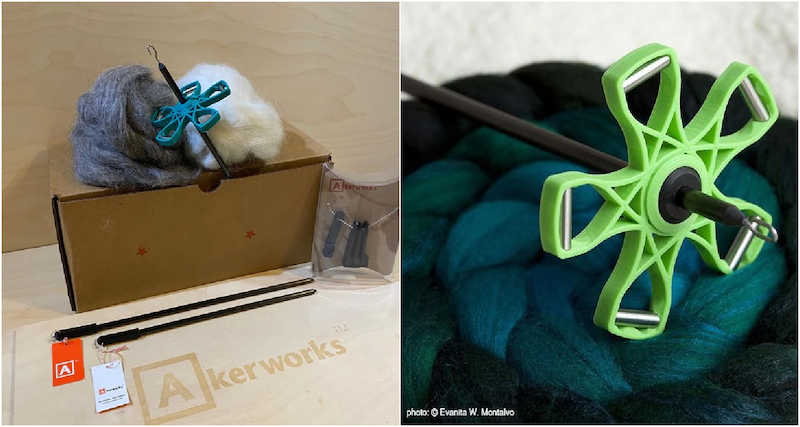
One of the really good beginning spindles is made by our friends at Akerworks. You can buy a spindle individually or buy a “getting started” kit. The spindles are durable and come in an array of colors. When I travel, I bring one of my Akerworks spindles and haven’t broken one yet.
If your aesthetic runs more towards wood, the Schacht Spindle Company Hi-Lo is a good place to start.

So is Bosworth.
If top-whorls don’t speak to you, try …
Jenkins for Turkish or cross arm spindles.
Woodland Woodworks for supported spindles.
Fiber
You will need fiber to spin. I recommend using a medium wool like Corriedale or Falkland in a color you love. But again, if a particular fiber calls to you, try it and see how it goes. You will always use something you love more than something you feel you should use.
Hopefully, you can find fiber at your local yarn shop, but if not there are lots of places online.
Two spots where I buy my fiber to teach are:
DM Fibers for dyed Corriedale top.
RH Lindsay for sliver (pronounced SLY-ver), which is a woolen preparation that some find easier to start spinning with.
If you are hankering to spin a hand-dyed braid rather than solid-colored fiber, may I suggest Into the Whirled? I’ve used their fiber for years—but they are just one of hundreds of fiber dyers who all do beautiful work.
If you want more suggestions, let me invite you over to peruse my stash that has taken over my entire house, or, again, just check the comments section of this post.
How to Learn
Hands down: the best way to learn is in person. Maybe your LYS has classes or maybe someone in your knitting group is a spinner, too. There may be a local spinning guild near you or you might find a great class at a sheep and wool show.
Human-to-human and hand-to-hand is how we’ve learned to spin since the beginning. Having someone to watch and to watch you and help you make adjustments really makes a difference.
If you are looking for a class online, I recommend Maggie Casey. She taught me to spin after I had given up due to crummy teachers. I wouldn’t be doing what I do now if it wasn’t for her. She is an excellent teacher.
LongThread Media (which used to be Interweave) has two spindle spinning classes that she teaches.
There is a short free class called The Spinning Teacher, and a longer form class you can buy called Getting Started on a Drop Spindle.
Yep, there are all kinds of free videos on YouTube, try them and see if they work for you. But my money (and my career) is on Maggie.
There are books and magazines to learn from. PLY Magazine has an entire issue devoted to Suspended Spindles and one on Supported Spindles.
For a deep dive into spindles there is Abby Franquemont’s book, Respect the Spindle.
If you do feel the siren song of spinning, PLY Magazine is a quarterly magazine focused on all levels of spinning, and PLY has an online spinning guild, featuring videos with a whole lot of spinning teachers covering a whole lot of topics.
To Wrap Up
Good luck and have fun on your spindle journey!
Remember no yarn is wasted. You will learn so much more from a yarn that didn’t quite go right than one that went perfectly.
Remember to use the yarn you make, even if it’s a stripe in a current knitting project! I can’t tell you how many people you’ll excitedly show it to and each one of them will think you are a magician.

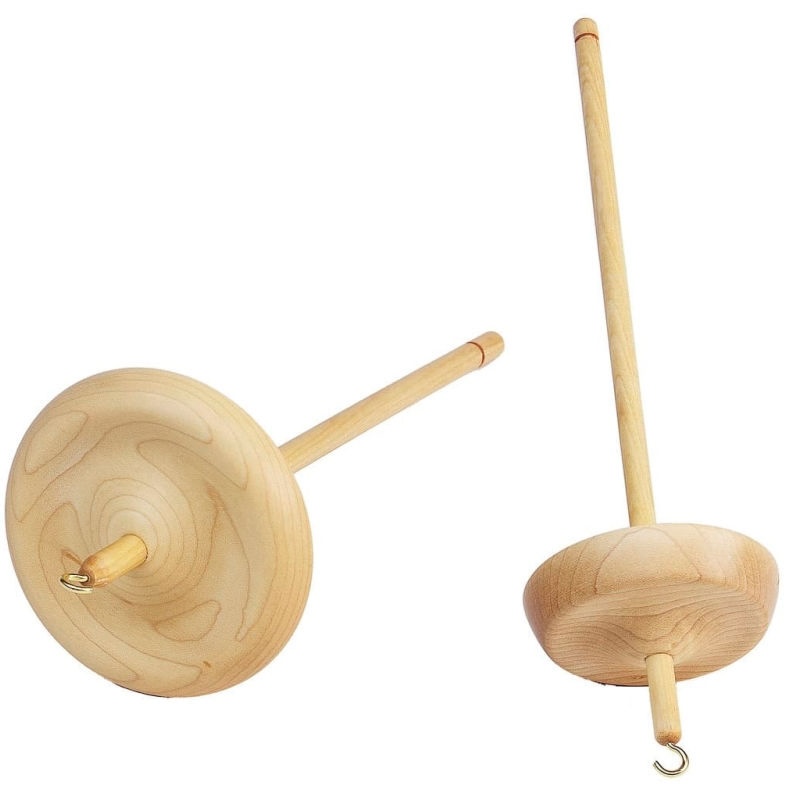


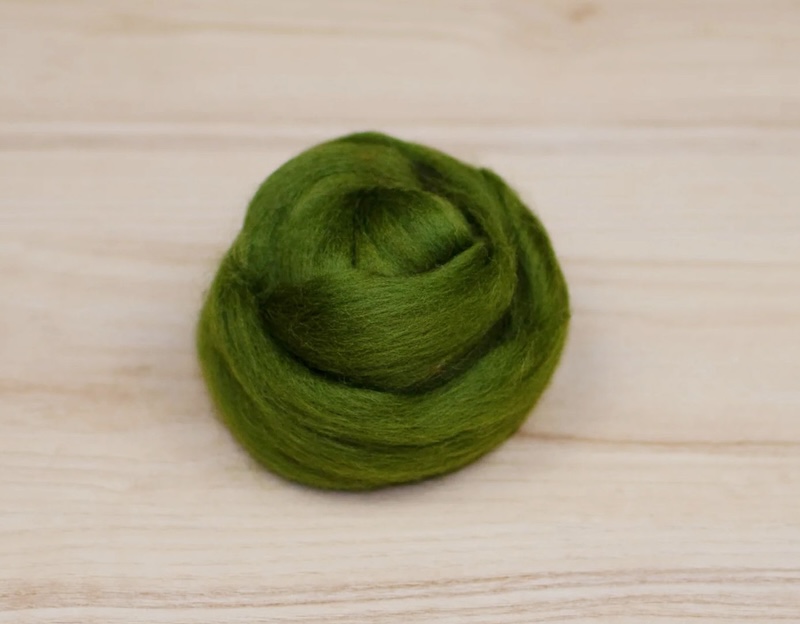


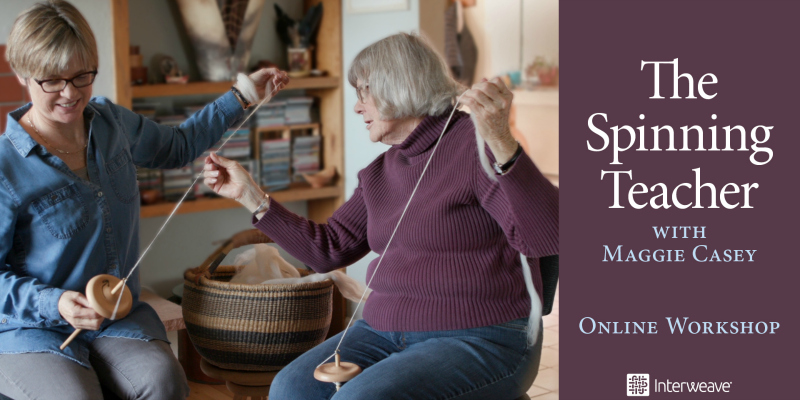
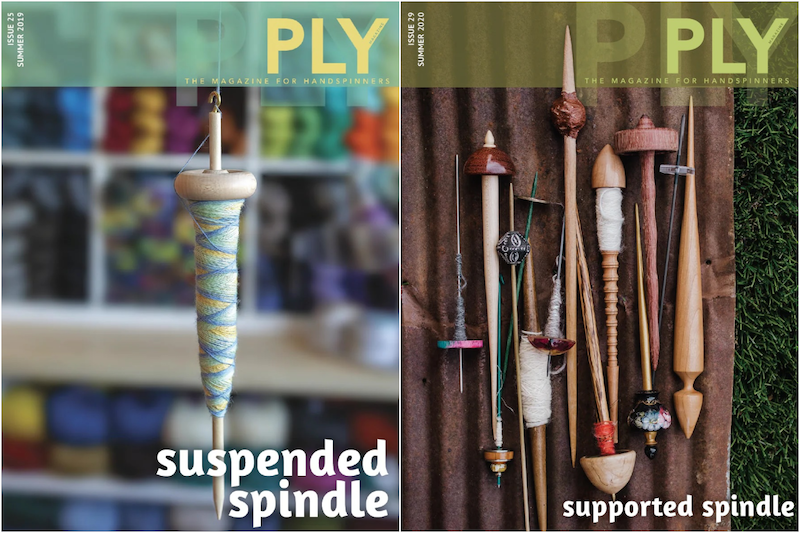

On my 2026 Give it a Whorl list!
Thank you for this beginners guide, Jillian.
Have fun Kathleen!
This is how I learned to spin, with a spindle, and what fun it was! Wool is so “grippy” that I was making long strands of yarn in no time. It was fun to experiment with any wool I could get my hands on, just to see how different one sheep bread was from another. Pure joy.
I’ve just started spindling and really appreciate your recommendations. I like how spinning on a spindle is so portable. Supported spinning is eluding me so far though. A goal for the coming year.
It is like magic. I’ve tried it with coaching from spinning friends and failed, but I may revisit it one of these days. Thanks for the tips!
Thank you for this excellent overview – perfect for those who are as intrigued as I am by this ancient skill. A couple of years ago I found a picture of an Egyptian woman from ancient times looking elegant and relaxed as she was spinning with a beautiful wood spindle. I had to try it too. It takes patience but I like that you can stand up and spin and bring it everywhere. I myself am hand spinning a large bag of Greenland muskox fiber I bought some time ago. I’m using an inexpensive wood spindle (plastic seems unnecessary). Muskox is the softest and warmest fiber I’ve ever had my hands on. I can’t wait to knit up a shawl or a wrap when I’m done. Happy spinning.
When I had moved to the Seattle area I signed up for spinning classes at The Weaving Works, and the very first thing we were taught was using a drop spindle!
Must note that collecting drop spindles can be very similar to building a yarn stash!
oooh yes!
My first encounter to spindles happened at a trading post in New Mexico, watching a woman spin fiber preparing yarn for a Navajo textile. I was also advised at the Taos wool festival to get good with a spindle before buying my first spinning wheel. I have over a dozen different spindles – each is special. I always take a spindle and fiber when I travel. I use a spindle to test drive new fibers.